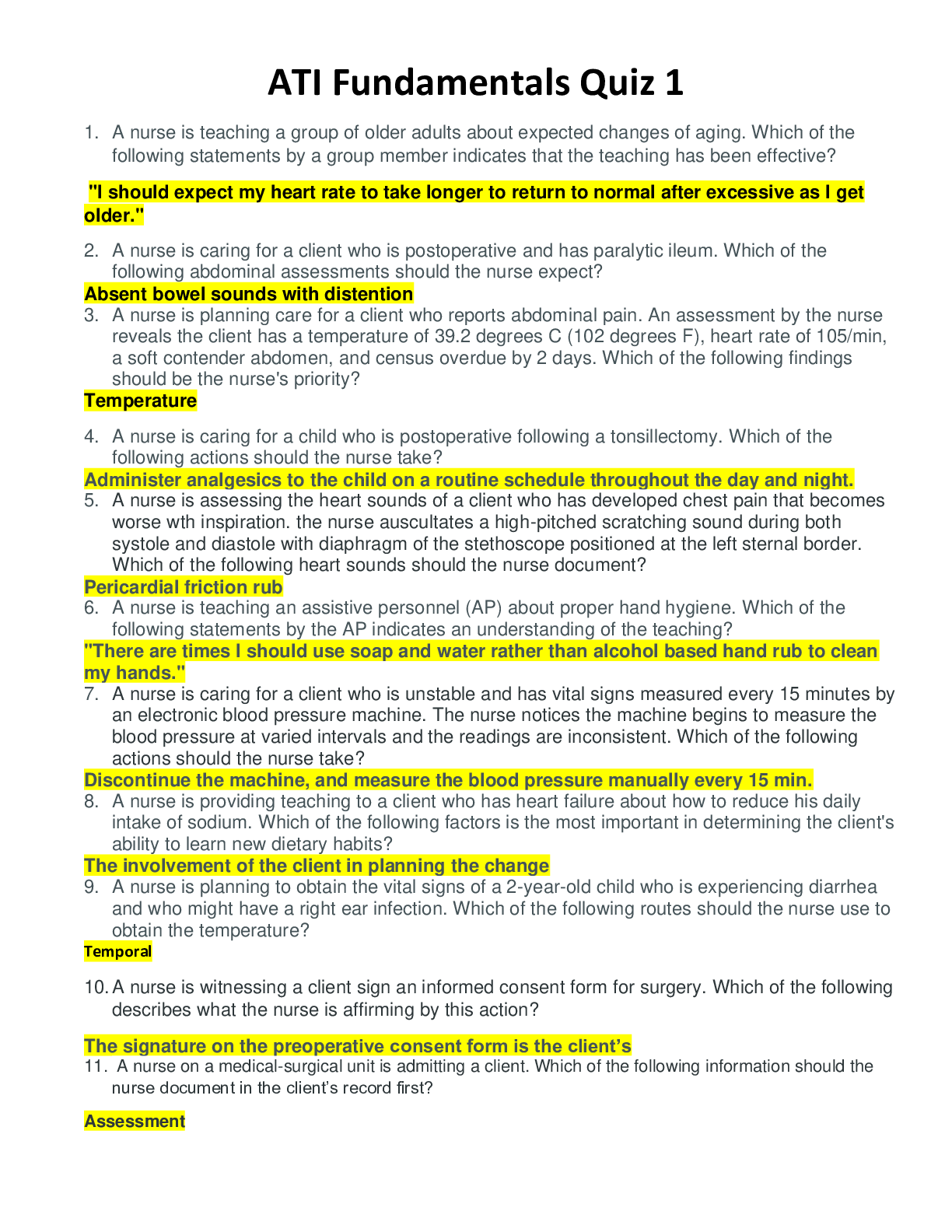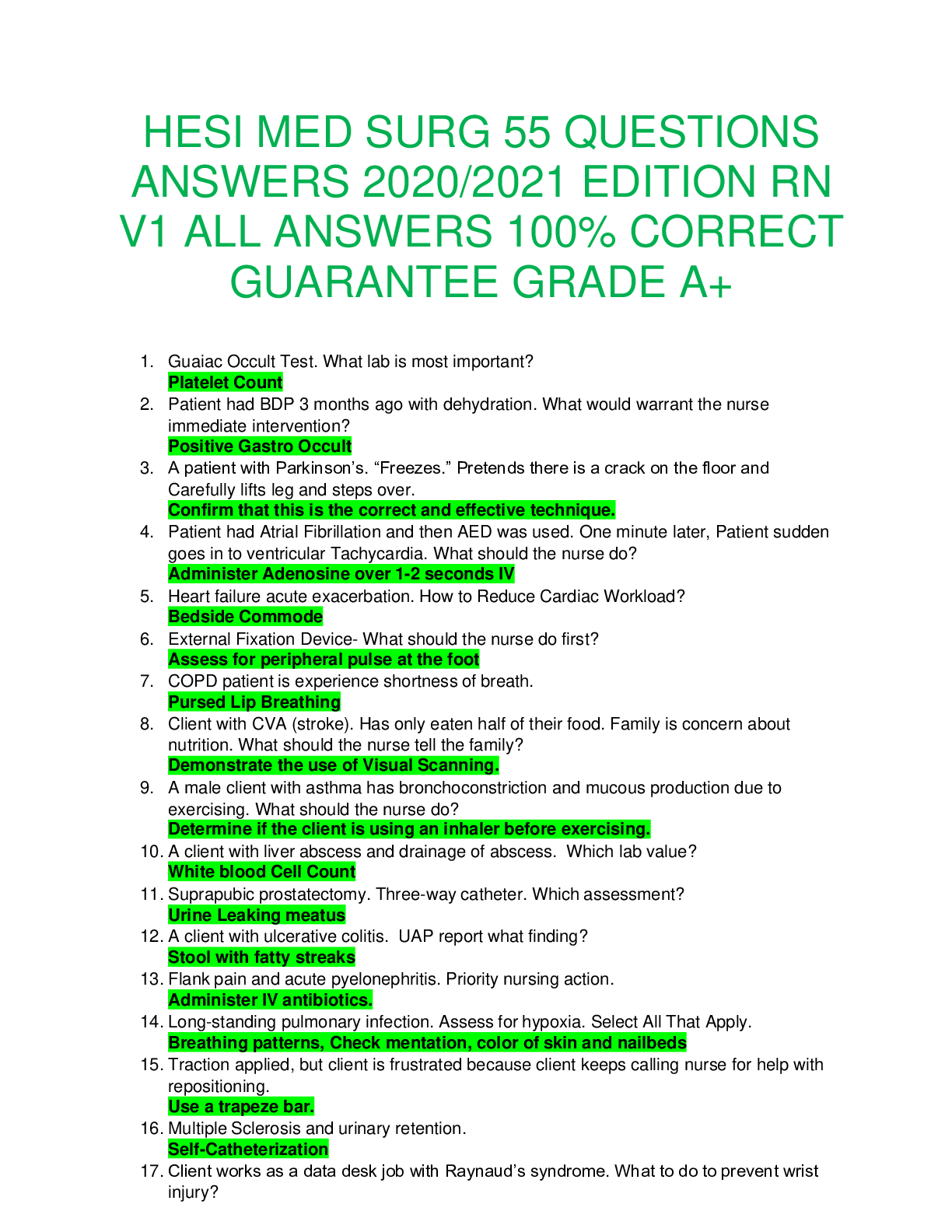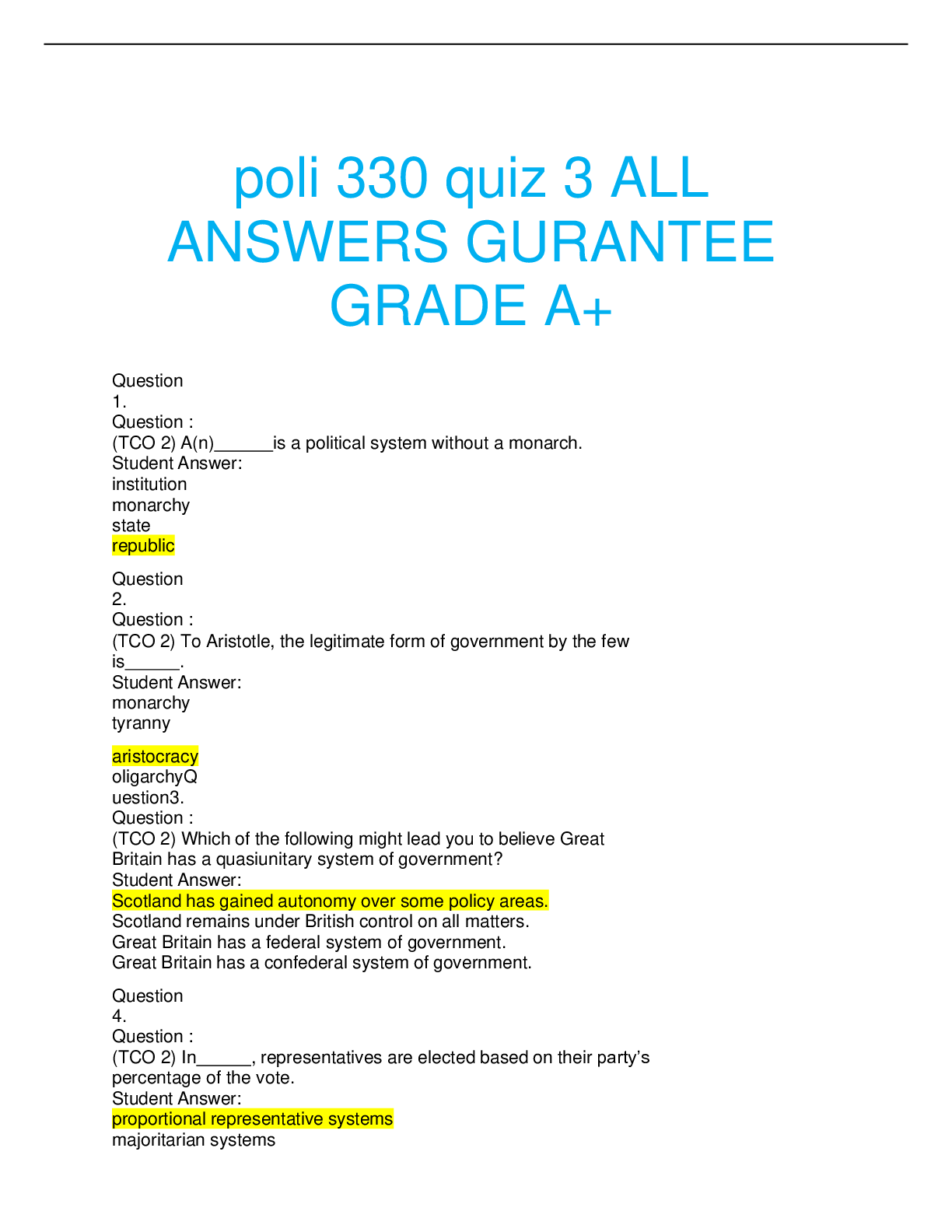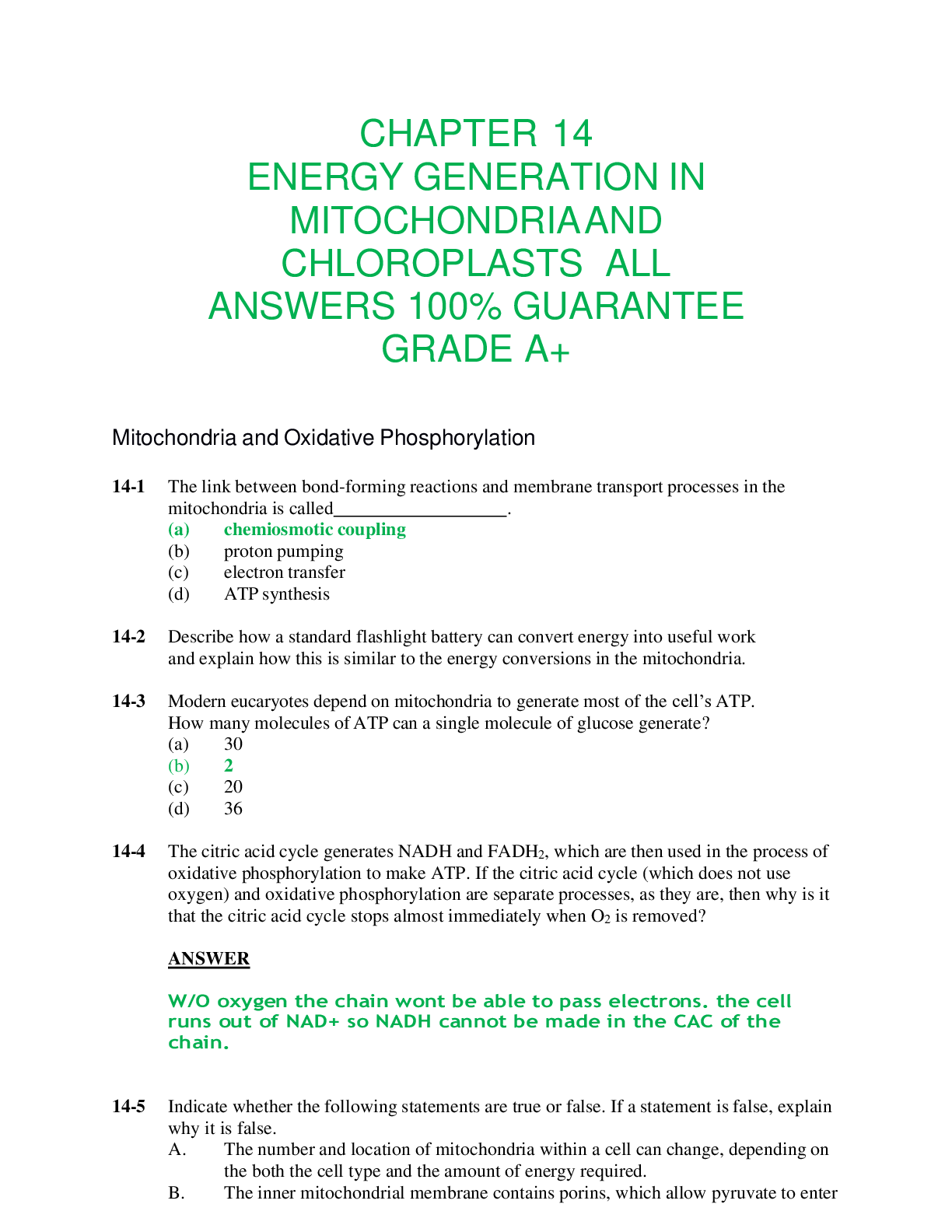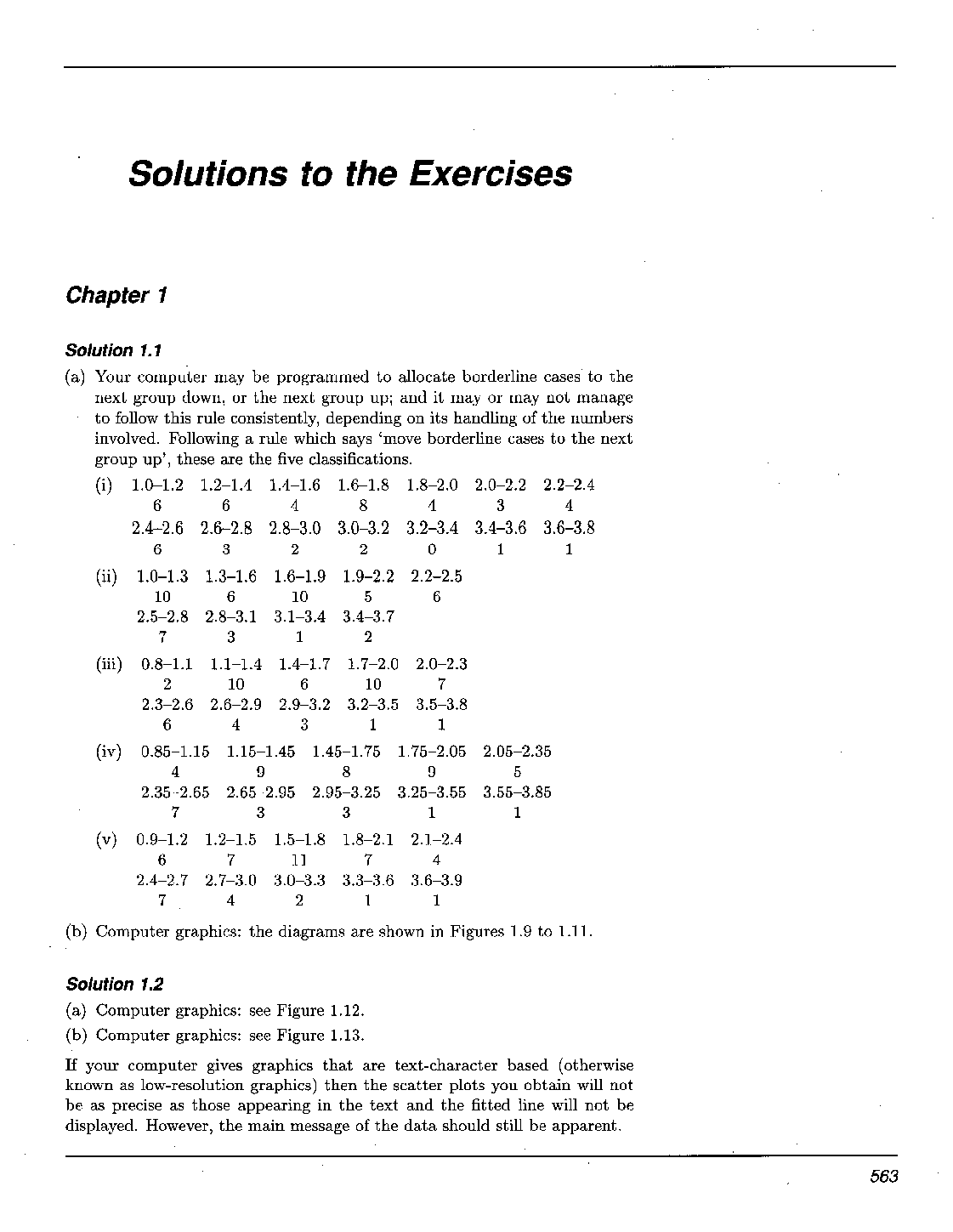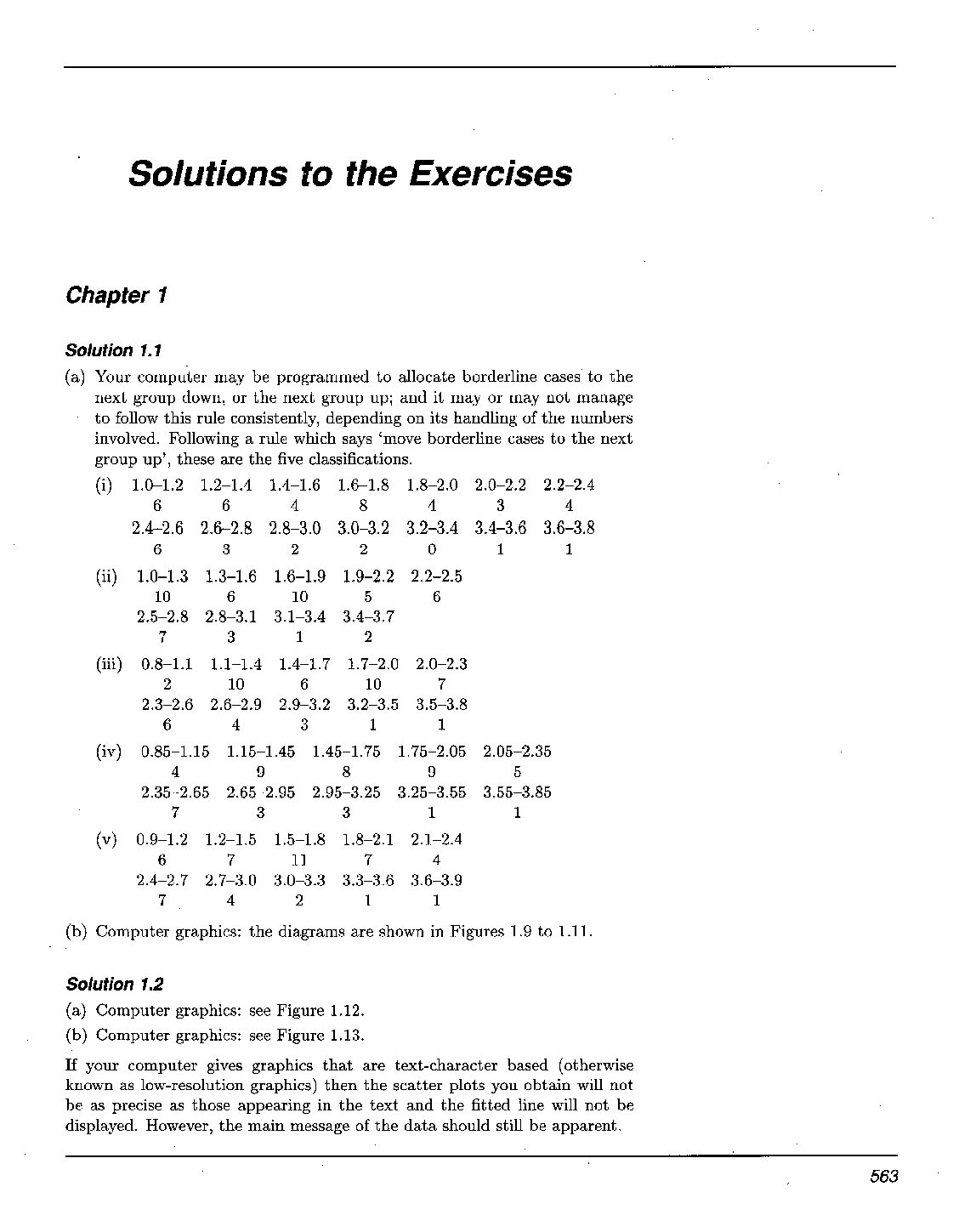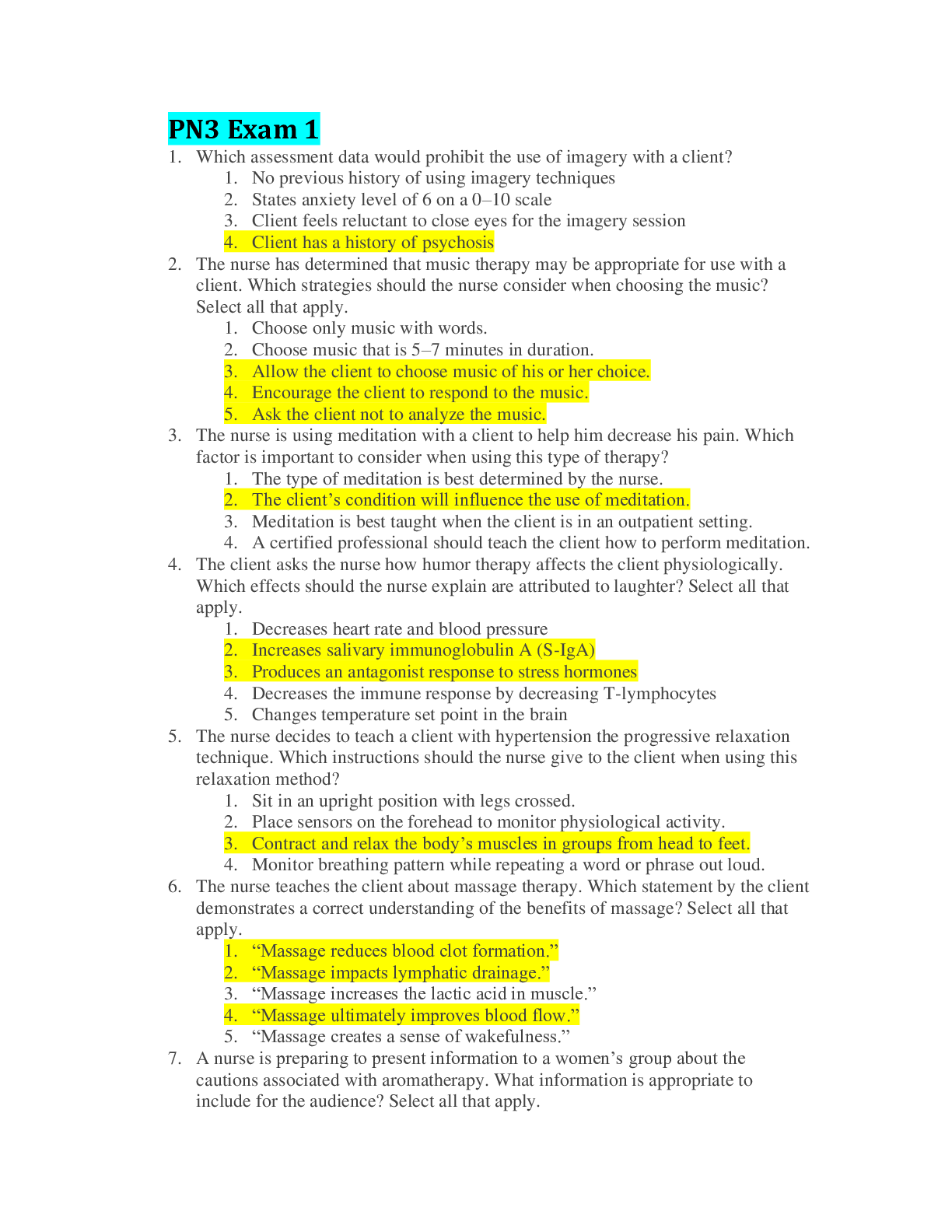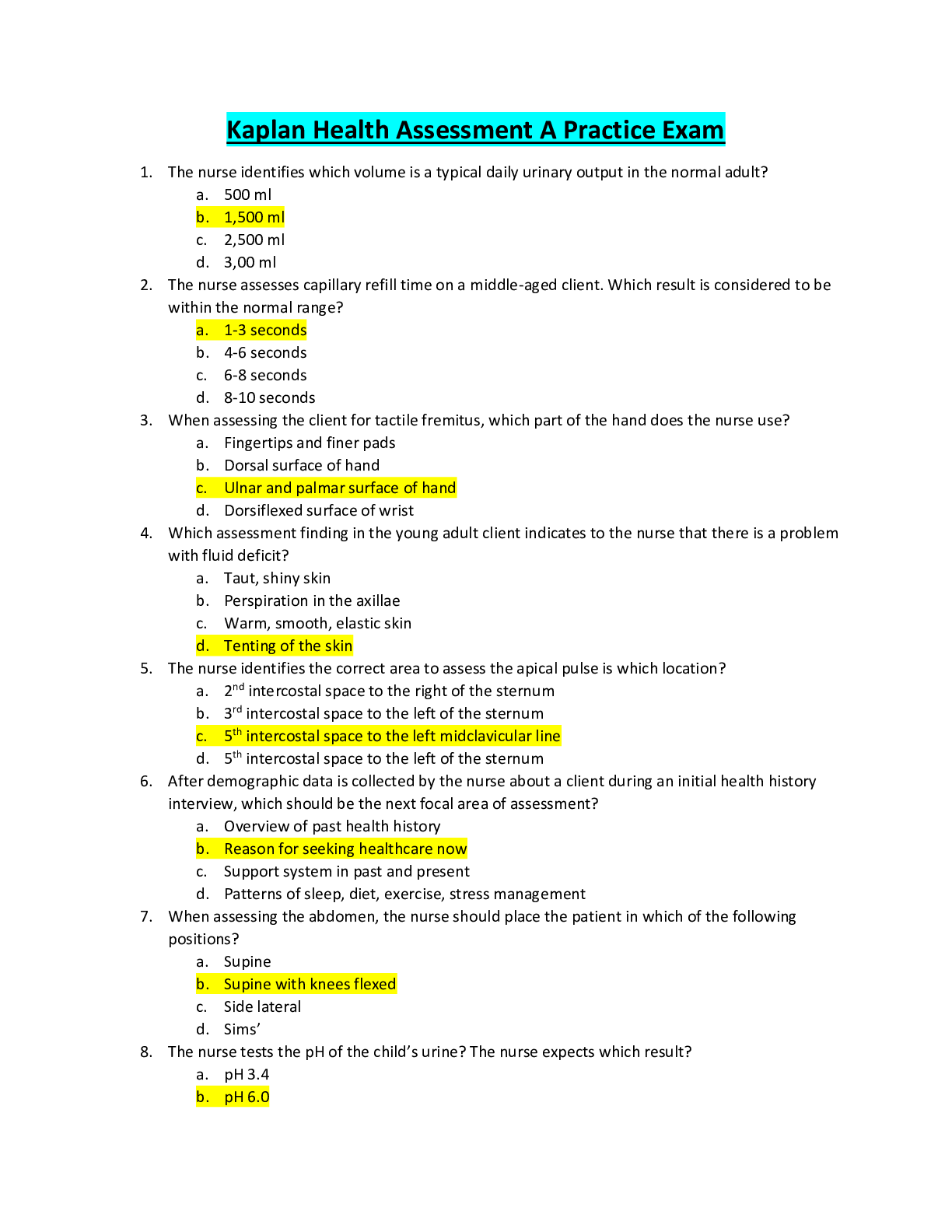Health Care > QUESTIONS & ANSWERS > PCCN questions ALL ANSWERS 100% CORRECT SPRING FALL-2022/2023 SOLUTION GUARANTEED GRADE A+ (All)
PCCN questions ALL ANSWERS 100% CORRECT SPRING FALL-2022/2023 SOLUTION GUARANTEED GRADE A+
Document Content and Description Below
Two days following a near-drowning accident, a pt is dyspneic, using accessory muscles, expectorating large amounts of secretions and reporting feeling of impending death. Changes to the assessment ... data include RR- 24 TO 36 CXR clear to bilateral diffuse infiltrates ABG 40% face mask or 100% non-rebreather mask pO2 120 mm Hg to 56 mm Hg pCO2 33 mmHg to 56 mmHg pH 7.42 to 7.35 HCO3 24 meq/L to 27 mEq/L Which of the ff do these changes most likely represent A. aspiration pneumonia B. pulmonary embolism C. interstitial pneumonitis D. ARDS - D. The onset of symptoms occured within 48 hours of the incident. THe bilateral diffuse infiltrates and ABG results indicating hypoxemia and CO2 retention are all consistent with ARDS. Aspiration pneumonia should include hypoxxemia, respiratory alkalosis. The CXR results would reveal an area of opacity with aspiration pneumonia rather than diffuse infiltrates. Interstitial lung disease invlolves an inflammation of supportive tissue between the air sacs rather than inflammation in the air sacs themselves. Symptoms would be SOB and a dry cough. A pt reports chest pain that is sharp, constant, worse when lying down and alleviated with sitting up and leaning forward. The most likely cause of these findings is A. ACS B. pericarditis C. PE D. AAA - B Pericarditis is inflammation of the pericardial sac. The damaged epicardium becomes rough and inflamed and irritates the pericardium lying adjacent to it, precipitating pericarditis. Pain is the most common symptom of pericarditis. THe pain is sharp, constant and is alleviated when sitting up and leaning forward. A pt tells a nurse, "I don't know how I'm going to pay for this hospitalization." The nurse shouldA. arrange a meeting with hospital social services staff B. Notify the business office so a payment plan can be designed C. redirect the pt toward meeting psychologic needs D. give the pt applications for public assistance medical coverage - A. Collaboration with a social worker is indicated in this case the social worker can assist the pt in identifying ways to address the financial implications of this hospitalization and help identify methods of payments. A cardiac pt with with DNR status is being managed medically. The nurse notes a new cough, thick yellow sputum and a temperature of 101.4 (38.4) Coarse crackles are present in the right upper field. The nurse should most immediately anticipate A. blood and sputum cultures followed by a broad spectrum abx B. mucolytics and judicious IV fluid administration C. an antyipyretic and conservative management D. NPO status and encouragement of frequent activity - A. This pt symptoms are consistent with pneumonia. Management should include abx therapy, oxygen therapy for hypoxemia, mechanical ventilation if acute respiratory failure develops, fluid management for hydration, nutritional support, and treatment of associated medical problems and complications. Which of the ff findings is most indicative of a ruptured aortic aneurysm A. Back pain B. bounding peripheral pulses C. intermittent claudication D. warm, flushed skin - A. An aneurysm is the localized dilation of an artery. Should an aneurysm rupture, blood will build up under pressure in the tissues surrounding the aorta, which can result in acute pain and tenderness in theses areas. This is particularly the case if the aneurysm leaks from the back of the aorta. Ruptured AAA presents with a classic triad of pain in the flank or back, hypotension and a pulsatile abdominal mass; however, only about half of the full triad. The pt will complain of the pain and may feel cold, sweaty and faint on standing. The pt may also report abdominal pain. A small percentage may have vomiting According to recommendations based on research findings, pain assessment should occur A. based on changes in vital signs B. only when the pt movements indicate the pt is seeking attention C. routinely, regardless of physical findings D. only when the presence of pain can be validated - C. Pain is considered the fifth vital sign and must be assessed regularly. Presence of physical findings may be part of the comprehensive assessment of pain. However, physical findings may not be present in all patients with pain A pt with a tracheostomy requires frequent suctioning for thick sputum, A nurse finds a colleague instilling saline in the endotracheal tube prior to suctioning. The most appropriate response by the nurse would be to [Show More]
Last updated: 1 year ago
Preview 1 out of 31 pages
Instant download
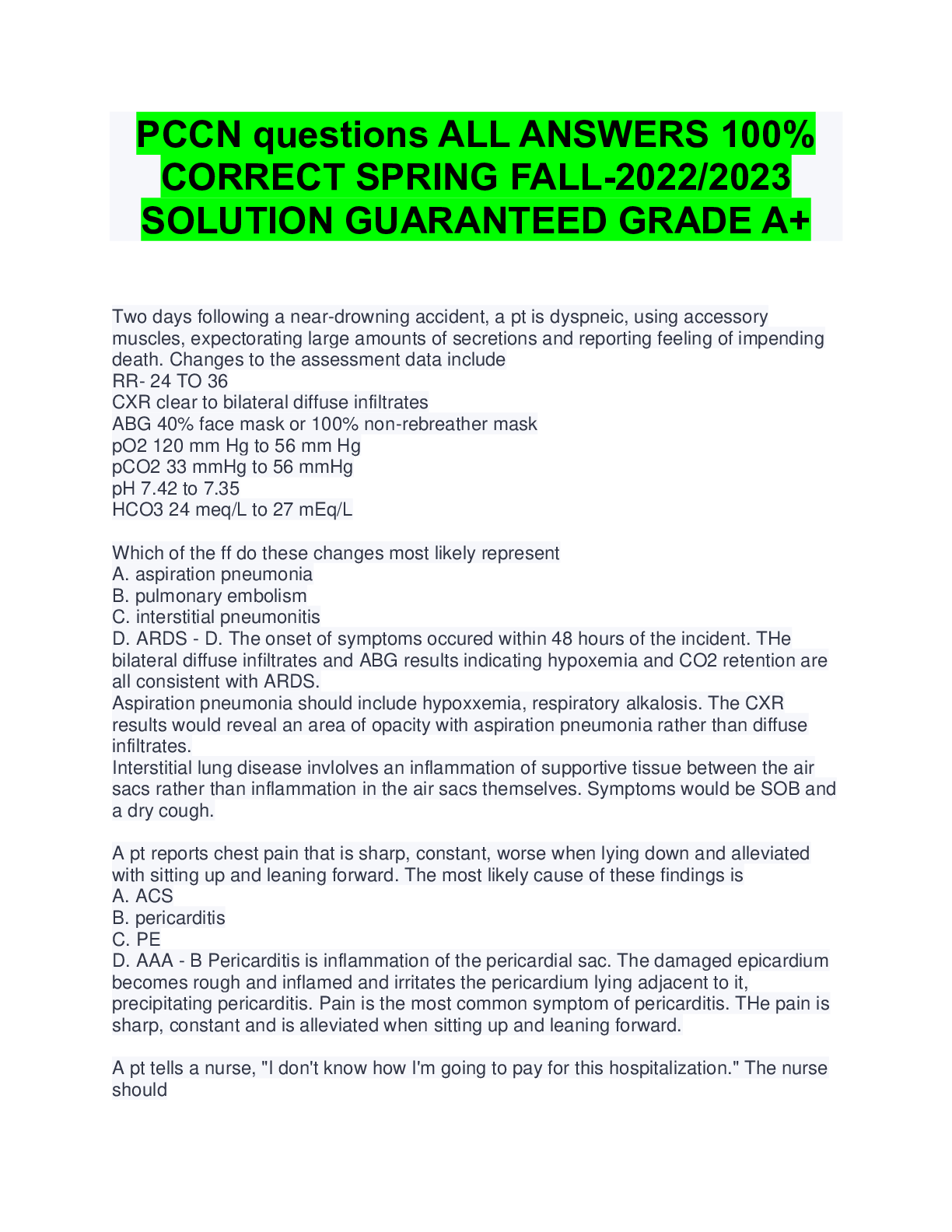
Buy this document to get the full access instantly
Instant Download Access after purchase
Add to cartInstant download
Reviews( 0 )
Document information
Connected school, study & course
About the document
Uploaded On
Sep 04, 2022
Number of pages
31
Written in
Additional information
This document has been written for:
Uploaded
Sep 04, 2022
Downloads
0
Views
24

